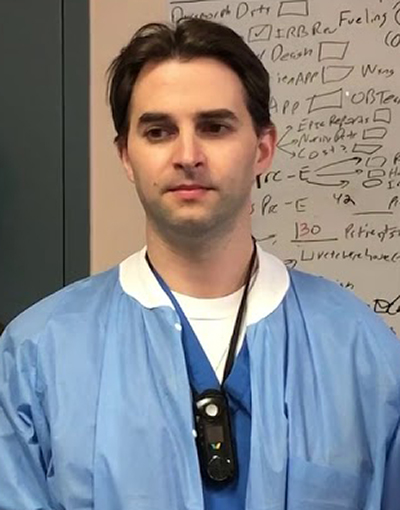Mount Sinai Health System Study Finds Use of AI-Enabled Monitoring System Improves Use of Blood During Childbirth
Study suggests AI-enabled technology can help clinical laboratories and hospital blood banks save thousands of dollars annually on expensive blood products
Artificial intelligence may prove to be a useful tool in helping hospitals better manage utilization of blood products. That’s one conclusion from a newly-published study done at New York’s Icahn School of Medicine at Mount Sinai. If so, this is a technology improvement that would be welcomed by blood bankers and clinical laboratory managers who must manage the cost and utilization of blood products.
There’s no way around it—blood is expensive. A typical 400- to 600-bed hospital likely budgets upwards of one million dollars annually just for blood products. Almost universally, in hospitals the medical laboratory manages the blood bank. This is where medical technologists trained in blood banking test patients and test blood to ensure whole blood units, or other blood products such as platelets, match and will not trigger a negative reaction when administered to the patient.
When left unmanaged, the cost and utilization of blood bank products can put the budgets of hospital medical laboratories in the red. Hospitals also invest a great deal of money training surgeons to accurately assess the procedure and order the correct amount of blood components prior to surgery.
Therefore, new artificial intelligence (AI) technology that helps pinpoint patients’ blood loss during childbirth will be of interest to blood bankers and hospital laboratory administrators.
Can AI Help Clinical Labs Improve Utilization of Blood Products in Hospitals?
Physicians at the Icahn School of Medicine at Mount Sinai recently investigated whether “Quantifying blood loss” would improve the use of blood during human childbirth. They published the results of their study in the International Journal of Obstetric Anesthesia.
Their research into 7,618 deliveries (vaginal and cesarean) involved “An observational study comparing blood loss, management, and outcomes between two historical cohorts (August 2016 to January 2017 and August 2017 to January 2018) at an academic tertiary care center. Patients in the intervention group (second period) had blood loss quantified compared with visual estimation for controls,” the research paper notes.
The researchers concluded that “Quantifying blood loss may result in increased vigilance for vaginal and cesarean delivery. We identified an association between quantifying blood loss and improved identification of postpartum hemorrhage, patient management steps, and cost savings.”
The researchers, according to a press release, employed the Triton AI-enabled platform from Gauss Surgical, a silicon valley-based health technology company, to “monitor blood loss in all deliveries (vaginal and cesarean, n=3807) at Mount Sinai Hospital from August 2017 through January 2018 to support the institution’s stage-based hemorrhage protocol.”
The researchers found that use of a monitoring system was associated with earlier postpartum hemorrhage intervention and annual cost savings of $172,614 in lab costs and $36,614 in blood bank costs.

Measuring Blood Loss: The Eye versus AI
Gauss has secured Food and Drug Administration (FDA) clearance for Triton and more than 50 US hospitals are using it. Triton provides, in real-time, images of blood-saturated surgical sponges and canisters and uses computer vision and machine learning to pinpoint blood loss, reported MD+DI.
Traditionally, physicians visually estimate blood loss during procedures. When they are off in their estimates of postpartum hemorrhage, harmful postpartum health complications and deaths can occur, the Mount Sinai researchers explained in their paper.
And although other vital signs—heart rate, rhythm, blood pressure, oxygen level, etc.— are monitored with equipment in the surgical suite, blood usage is not.
“Blood loss in surgery has been an enigma for decades since the dawn of medicine,” Siddarth Satish, Founder and Chief Executive Officer of Gauss, told MD+DI. “We monitor many other vital signs in surgery, but ultimately there hasn’t been any direct indicator of a patient’s hemoglobin loss.”
Bleeding Better Recognized, Less Blood Transfusions
After the Mount Sinai researchers used the Triton system to monitor blood loss during 3,807 vaginal and cesarean deliveries from August 2017 to January 2018 at Mount Sinai Hospital, they compared their findings to 3,811 deliveries from August 2016 to January 2017, during which doctors relied solely on visual estimation of blood loss.
The study found the following, according to the news release:
- Improved hemorrhage recognition in vaginal deliveries of 2.2% and cesarean sections of 12.6% compared to .5% and 6.4%, respectively;
- Less blood transfusions needed (vaginal patients): 47% with Triton compared to 71%;
- Reduced blood transfusion dose (cesarean section): 1.90 units with Triton compared to 2.52 units;
- Cost savings: $209,228 a year (the total of aforementioned lab and blood bank costs).
“What we like about [Gauss] is that it somewhat embodies precision medicine in the sense that you’re using more precise tools of measurement in their first use case,” Garrett Vygantas, MD, MBA, Managing Director for OSF Ventures, the financing arm of OSF Healthcare, who also serves on Gauss Surgical’s board, told MD+DI.
Possible New Resource for Hospital Medical Laboratories
So, will AI quickly become an omnipresent overseer in surgical suites? Hardly. However, AI is in the early stages of finding places in healthcare where it can be useful. “A lot of people are predicting that AI will play a huge role in healthcare … I think it’ll be ever-present. There will be a little bit of AI in everything you’re doing, but I think the actual practice of medicine in its truest form is going to carry forward,” Satish told Fierce Healthcare.
Hospital medical laboratories and blood blanks looking for new tools to manage blood use may want to look into AI-enabled systems like Triton. Saving money is not the only benefit. Less transfused blood is better for patient care as well.
—Donna Marie Pocius
Related Information:
Gauss Uses AI to Accurately Measure Blood Loss



